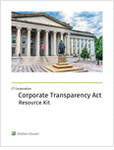This article originally appeared in the National Law Journal.
A recent order by the U.S. Court of Appeals for the Federal Circuit is likely the final nail in the coffin for whistleblower cases against companies that falsely label products as patented.
The patent reform act’s severe limitation on false-marking cases properly applies to cases filed before the law’s enactment, the Federal Circuit ruled on May 2.
The America Invents Act, enacted on Sept. 16, 2011, requires that false-marking plaintiffs demonstrate a competitive injury from a company’s false marking. The order stops a cottage industry of false marking cases that sprung up in the wake of a December 2009 Federal Circuit ruling that opened the door to sizable monetary awards in qui tam cases. That ruling, in Forest Group v. Bon Tool held that the False Marking Statute “requires the penalty to be imposed on a per article basis.”
The Federal Circuit’s unanimous panel per curium order in Rogers v. Tristar Products denied Bruce Rogers’ motion for the court to reconsider its Nov. 16, 2011, dismissal of his appeal. That earlier order remanded the case to Judge Eduardo Robreno of the Eastern District of Pennsylvania with instructions to dismiss, ruling the case to be moot.
Judges William Bryson and Sharon Prost and Senior Judge Anthony Schall issued both orders.
According to the recent order, Rogers discovered that Tristar’s Jack LaLanne Power Juicers were not patented, despite marketing efforts that tout the juicers’ “Special Patented Extraction Technology.” He sought up to $500 for each falsely marked product plus costs and attorneys fees.
Robreno dismissed Rogers’ suit on the ground that the lawsuit violated the constitution’s “take care” clause. He wrote that the whistleblower provision of the False Marking Statute “fails to provide the Executive Branch sufficient safeguards ‘to ensure that the President is able to perform his constitutionally assigned duties.’ ” He noted that, unlike the False Claims Act, the False Marking Statute has no provision to notify the Department of Justice about the complaint and relevant information.
The America Invents Act was enacted while Rogers’ appeal was pending. According to the order, he conceded in a Federal Circuit filing “that he could not meet the new standing requirement.” He then filed a motion for reconsideration, arguing that the AIA’s amendments violate the Constitution’s takings and due process clauses, and that he had an ownership interest in his lawsuit.
The recent order noted that the AIA’s language that the false marking amendments “shall apply to all cases, without exception,” means that “Congress intended to apply the competitive injury requirement to all pending cases, including cases pending in appellate courts.”
The order disputed Rogers’ argument that “by initiating the lawsuit it has become property.”
“In the analogous context of the False Claims Act, courts long ago rejected the argument that a constitutional protected property right vests upon initiating suit,” stated the order.
The panel then turned to Rogers’ argument that retroactively voiding his claim violates his due process rights. “By making the False Marking Act amendments retroactive, Congress was in significant part attempting to reduce the litigation expenditures in the large number of complaints filed, but as not yet subject to final judgment,” stated the order. “That objective was a legitimate justification for making the amendments…retroactive.”
Steven Angstreich, a partner at Philadelphia-based Weir & Partners and one of Rogers’ lawyers, said it is very disappointing that the amendment was made retroactive to pending false marking cases. “It did not, in our opinion, serve a realistic or reasonable purpose, which is one of the reasons to apply an amendment retroactively,” Angstreich said. The qui tam cases, in contrast, served the purpose of stopping companies’ improper actions, Angstreich said.
“I don’t believe there will be any [cases] pending after this. They will all be dismissed,” Angstreich said.
Noam Kritzer, a partner at New York’s Bakos & Kritzer and one of Tristar’s lawyers, said,”It’s the right decision, if there is false marking occurring for the competitors to police that.”
The ruling is “an interesting final chapter” of the false marking saga, said Joshua Slavitt, a patent partner at Philadelphia’s Pepper Hamilton. Slavitt isn’t involved in the Rogers case, but he’s closely followed false marking jurisprudence over the past few years.
“Fundamentally, what they said is even though filing a qui tam lawsuit affects a partial assignment of the government’s claim, until that action results in a final judgment there’s nothing the qui tam plaintiff has that involves vested rights. It’s not a vested right that entitled it to compensation,” Slavitt said.
Justin Gray, a San Diego associate at Foley & Lardner who has closely tracked the cases on his blog, said that 521 cases settled for a total of $22.6 million from May 2010 through March 2012. Of that amount, about half went to the U.S. government and half went to the false marking plaintiffs. Gray wasn’t involved in the Rogers case.
Plaintiffs’ lawyers rushed to file false marking cases following the Federal Circuit’s ruling in Forest Group. Some 890 new cases were filed from that ruling until April 2011.
In March 2011, the Federal Circuit announced a higher pleading standard in false marking cases that resulted in a reduced number of filings from then on. In In Re BP Lubricants USA Inc., the appeals court ruled that the same particularity requirement that applies to fraud cases “applies to false marking claims and that a complaint alleging false marking is insufficient when it only asserts conclusory allegations that a defendant is a ‘sophisticated company’ and ‘knew or should have known’ that the patent expired.”





